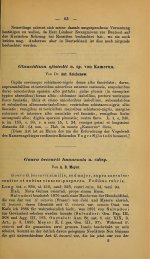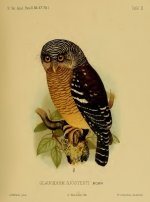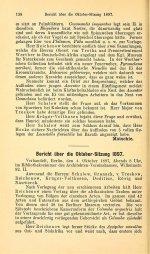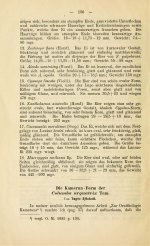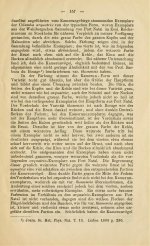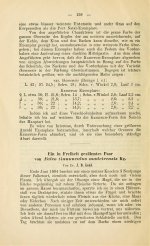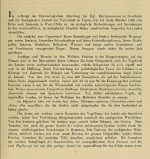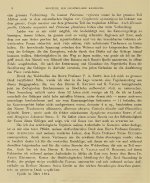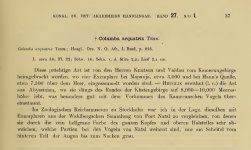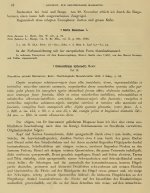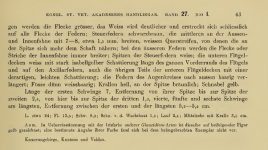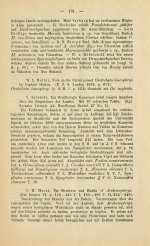Björn Bergenholtz
(former alias "Calalp")

Sometimes you think you will get a break, an easy topic to deal with, I thought I was in for a treat … but: No, no, no …
I ´ve been looking forward to this one for quite a while, one of very few, Swedish ornithologist commemorated in some Bird names:
● Sjostedt's Owlet (Taenioglaux) Glaucidium sjostedti REICHENOW 1893 a k a " Sjöstedt's Barred Owlet" or "Sjostedt's Barred Owlet" or simply " Sjöstedt's Owlet" but also "Cameroon Barred Owlet", " Chestnut-backed Owlet,", "Chestnut-backed Barred Owlet" or "Splendid owlet"
● Cameroon Olive-Pigeon Columba sjostedti REICHENOW 1898 a k a "Cameroon Mountain Olive Pigeon", "Cameroon Pigeon", "Cameroon Wood-Pigeon", "Cameroun Olive Pigeon", "Camroon olive pigeon" and "Ameron Rameron Pigeon" [sic], or "Sjostedt's Rameron Pigeon"
They both commemorate the (in Sweden fairly well-known) Swedish zoologist (most of all entomologist, he was a leading Termite-specialist), explorer and collector Bror Yngve Sjöstedt (1866–1948), of whom I know much more than I need for my entry regarding him, his life and career.
He is, for example, also commemorated in the butterfly "Kilimanjaro Swallowtail" Papilio sjoestedti AURIVILLIUS 1908, the ant Pachycondyla sjostedti MAYR 1896, the "stone fly" Megarcys sjostedti NAVÁS 1930, the " Blue Gularis Killifish" Fundulopanchax sjostedti LÖNNBERG 1895 and the endangered "four-digit toad" Didynamipus sjostedti ANDERSSON 1903 … etc. etc.
Yngve Sjöstedt himself, personally, described more than 1300(!) new taxon, mostly insects.
But solving "his" two birds, the above mentioned ones, wasn´t as simple as I hoped for!
Their commemoration is unquestionable, don´t worry, it´s Yngve Sjöstedt all right (even if the diacritic/umlaut, dots, over the o has been dropped in the scientific name since then), but the background, the story behind them, remains … and in trying to understand how it all went down I , of course, once again got stuck in the (far too, at least for me, tricky) German language.
Their respective dedications is fairly easy (even for me) to understand:
PS. And don´t hesitate to remark on any obvious errors that I might have done transcribing them.
I ´ve been looking forward to this one for quite a while, one of very few, Swedish ornithologist commemorated in some Bird names:
● Sjostedt's Owlet (Taenioglaux) Glaucidium sjostedti REICHENOW 1893 a k a " Sjöstedt's Barred Owlet" or "Sjostedt's Barred Owlet" or simply " Sjöstedt's Owlet" but also "Cameroon Barred Owlet", " Chestnut-backed Owlet,", "Chestnut-backed Barred Owlet" or "Splendid owlet"
● Cameroon Olive-Pigeon Columba sjostedti REICHENOW 1898 a k a "Cameroon Mountain Olive Pigeon", "Cameroon Pigeon", "Cameroon Wood-Pigeon", "Cameroun Olive Pigeon", "Camroon olive pigeon" and "Ameron Rameron Pigeon" [sic], or "Sjostedt's Rameron Pigeon"
They both commemorate the (in Sweden fairly well-known) Swedish zoologist (most of all entomologist, he was a leading Termite-specialist), explorer and collector Bror Yngve Sjöstedt (1866–1948), of whom I know much more than I need for my entry regarding him, his life and career.
He is, for example, also commemorated in the butterfly "Kilimanjaro Swallowtail" Papilio sjoestedti AURIVILLIUS 1908, the ant Pachycondyla sjostedti MAYR 1896, the "stone fly" Megarcys sjostedti NAVÁS 1930, the " Blue Gularis Killifish" Fundulopanchax sjostedti LÖNNBERG 1895 and the endangered "four-digit toad" Didynamipus sjostedti ANDERSSON 1903 … etc. etc.
Yngve Sjöstedt himself, personally, described more than 1300(!) new taxon, mostly insects.
But solving "his" two birds, the above mentioned ones, wasn´t as simple as I hoped for!
Their commemoration is unquestionable, don´t worry, it´s Yngve Sjöstedt all right (even if the diacritic/umlaut, dots, over the o has been dropped in the scientific name since then), but the background, the story behind them, remains … and in trying to understand how it all went down I , of course, once again got stuck in the (far too, at least for me, tricky) German language.
Their respective dedications is fairly easy (even for me) to understand:
But, just to be on the safe side: Anyone, with better knowledge of German, feel like translating them properly, as accurate as possible?The Owlet: "Glaucidium sjöstedti … Diese Art ist zu Ehren des um die Erforschung der Vogelwelt des Kamerungebirges verdienten Reisenden YNGVE SJÖSTEDT bennant"
The Pigeon: "Die von Sjöstedt beschriebene Kamerunform der Columba arquatrix hält der Vortragende für eine gut gekennzeichnete Art, … als Columba sjöstedti ausgefürt"
PS. And don´t hesitate to remark on any obvious errors that I might have done transcribing them.




